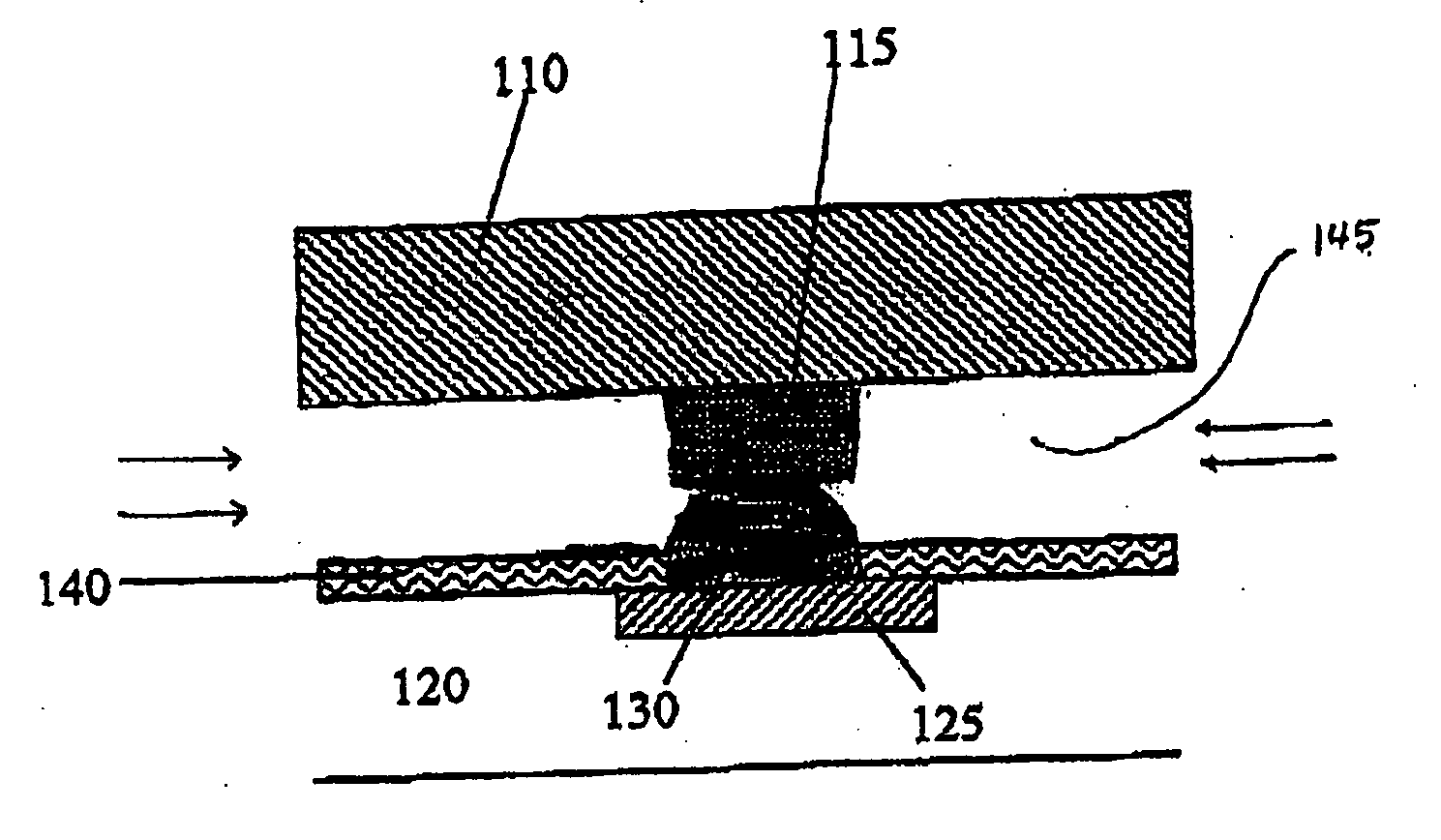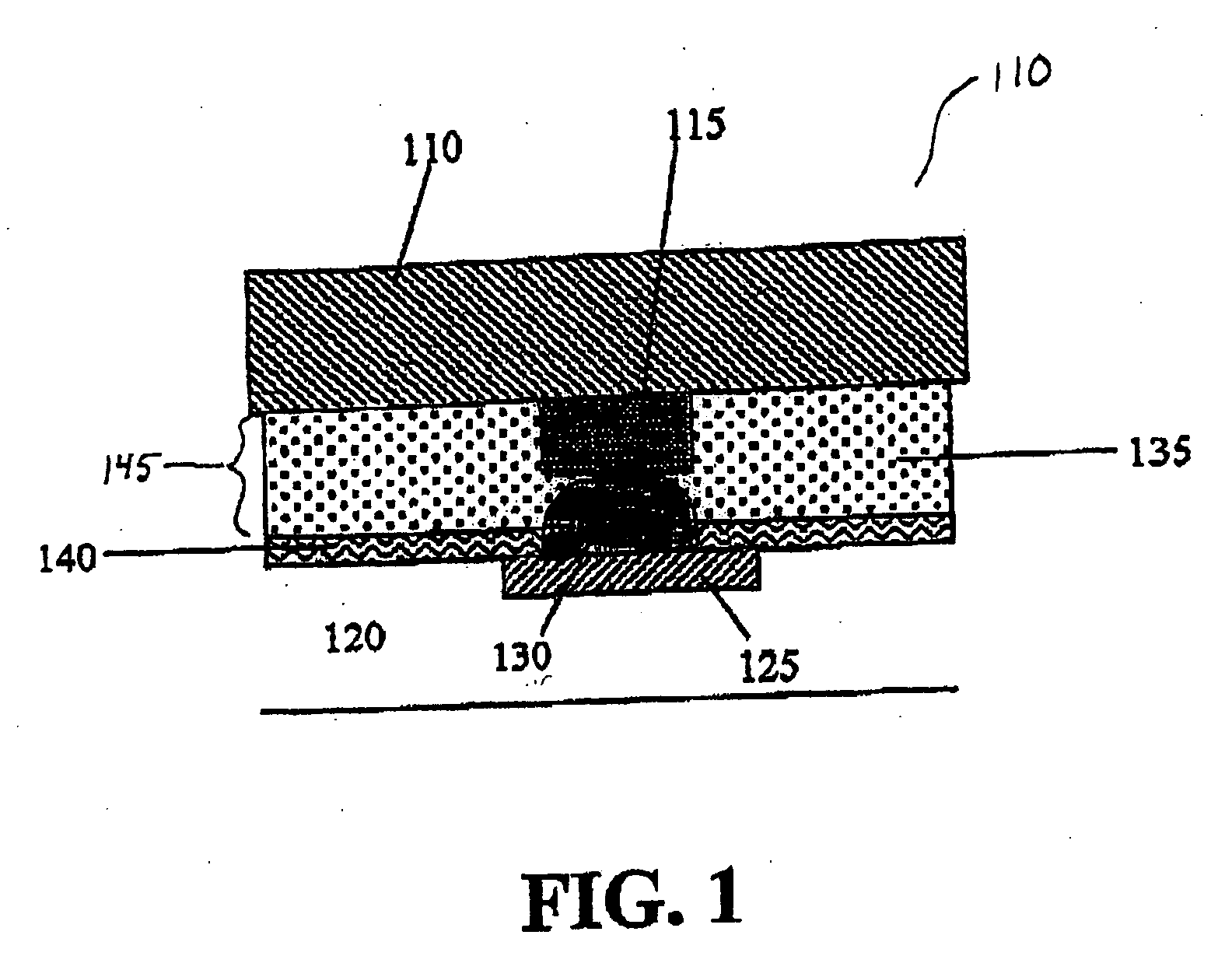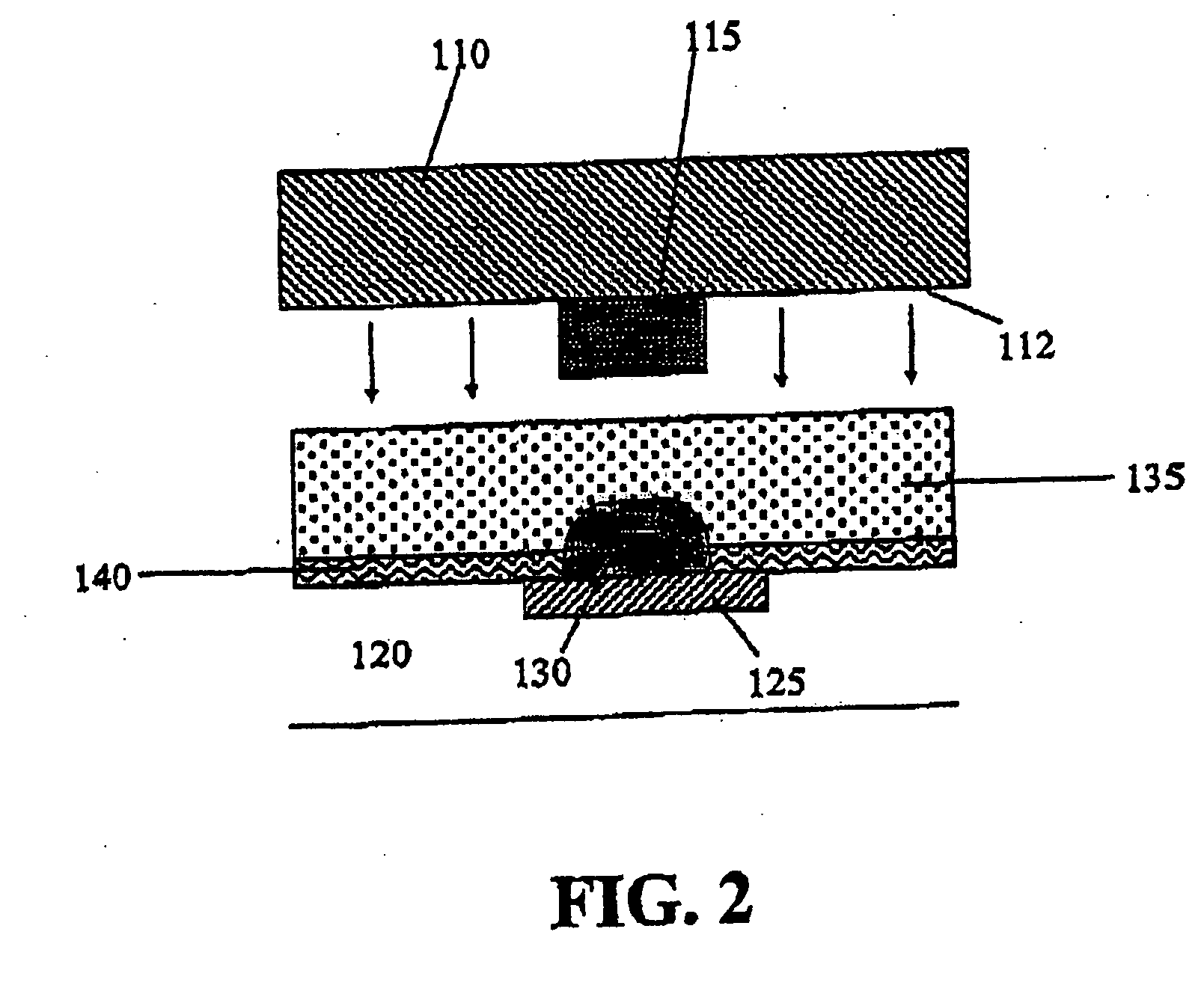Methods of making a curable composition having low coefficient of thermal expansion and an integrated circuit and a curable composition and integrated circuit made there from
a curable composition and thermal expansion technology, applied in the direction of solid-state devices, basic electric elements, material nanotechnology, etc., can solve the problems of inability to provide cured underfill materials, differences in cte are especially problematic for integrated circuits used, and early fatigue failure of solder interconnects, etc., to achieve low cte curable composition
- Summary
- Abstract
- Description
- Claims
- Application Information
AI Technical Summary
Benefits of technology
Problems solved by technology
Method used
Image
Examples
example 1
[0139] Table 1 provides the short names and chemical compositions of illustrative materials used to make the curable compositions of Tables 2-4.
TABLE 1Product NameChemical CompositionTGMXTetraglycidyl meta-XylenediamineTHPE / GE11,1,1-tris(p-hydroxyphenyl)ethane triglycidyl etherBis F2Bisphenol F diepoxideAPB1,3-Bis(3-aminophenoxy)benzene1,3-4 APB1,3-Bis(4-aminophenoxy)benzene1,4-4 APB1,4-Bis(4-aminophenoxy)benzeneASD4,4′-diaminodiphenyl sulfide2,4-DAT2,4-diaminotolueneAncamine ZA mixture of:1,3-benzenediamine4,4′-diaminodiphenyl methane1-[(3-aminophenyl)amino]-3-phenoxy and1-[[4-[(4-aminophenyl) methyl] phenyl] amino]-3phenoxy-Anacamine YA mixture of:4,4′-diaminodiphenyl methanePolymeric methylene dianiline3,4-diaminotoluene, 2,3-diaminotoluene and 2,4-diaminotolune1,3-PDA1,3-phenylenediamineDABDiaminobenzidine1,5-DAN1.5-Diaminonaphtelene1,8-DAN1.5-DiaminonaphteleneMTHPA3Methyltetrahydrophthalic anhydrideMHHPA3Methylhexahydrophthalic anhydrideCurezol 2PZ42-phenyl imidazoleCurezol 2...
example 2
Effect of Strongly Functionalized Nanoparticles on Processability
[0146] The premixtures and curable compostions were prepared as indicated in Example 1 according to Table 3 below. Formic acid derivatized boehmite (Catapal X-30F4) was provided by Sasol North America Inc. 2-(2-methoxyethoxy)acetic acid (MEA) and methoxy acetic acid (MA) were obtained commercially (Aldrich) and were used as received.
Synthesis of MEA-Alumoxane
[0147] In 1 L round bottom Flask equipped with a condenser, Catapal X-30F4 (10 g, 166 mmol) was mixed with 450 mL of water and heated until the Catapal was completely dissolved. 2-(2-methoxyethoxy) acetic acid (11.13 g, 83 mmol) was then added and the mixture refluxed for 48 hrs. A distillation apparatus was then placed and ˜500 mL of water was distilled along with the free formic acid. The solution was then taken to a rotary evaporator and water was removed in vacuo at 70° C. resulting in a white solid. The obtained solid was dissolved in a minimum amount of CH...
example 3
Effect of Nanoparticle Composition (i) on Modulus
[0152] The modulus of elasticity was calculated for various formulations in Example 1. It can be seen that use of the disclosed methods results in curable compositions having a higher modulus. Modulus was calculated using a DMA 2980 (TA Instruments) at a frequency of 1 hertz with a single cantilever fixture.
TABLE 4Wt.Modulus atModulus atFormulaResinCuring AgentNanofiller%25° C. (GPa)150° C. (GPa) 1TGMXAncamine Z3.92.5 6TGMXAncamine ZDispal286.24.0X30CRN11TGMXAncamine ZCatapal A386.64.629TGMXAncamine ZCatapal A326.13.930TGMAAncamine ZHydroxyapatite286.33.9 2TGMXAncamine Y3.82.217TGMXAncamine YCatapal A368.15.431TGMXAncamine YHydroxyapatite265.53.5 5TGMX2P4MZ3.21.0(6% by wt.)23TGMXCurezol 2P4MZCatapal A336.52.1
PUM
| Property | Measurement | Unit |
|---|---|---|
| temperature | aaaaa | aaaaa |
| particle size | aaaaa | aaaaa |
| particle size | aaaaa | aaaaa |
Abstract
Description
Claims
Application Information
 Login to View More
Login to View More - R&D
- Intellectual Property
- Life Sciences
- Materials
- Tech Scout
- Unparalleled Data Quality
- Higher Quality Content
- 60% Fewer Hallucinations
Browse by: Latest US Patents, China's latest patents, Technical Efficacy Thesaurus, Application Domain, Technology Topic, Popular Technical Reports.
© 2025 PatSnap. All rights reserved.Legal|Privacy policy|Modern Slavery Act Transparency Statement|Sitemap|About US| Contact US: help@patsnap.com



